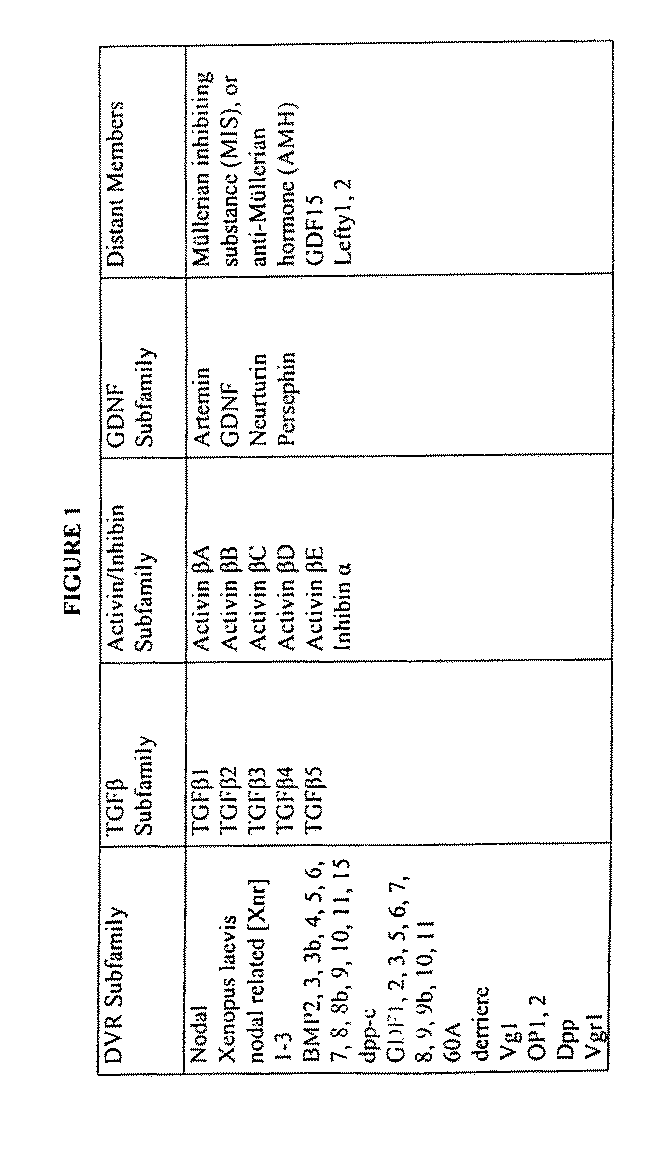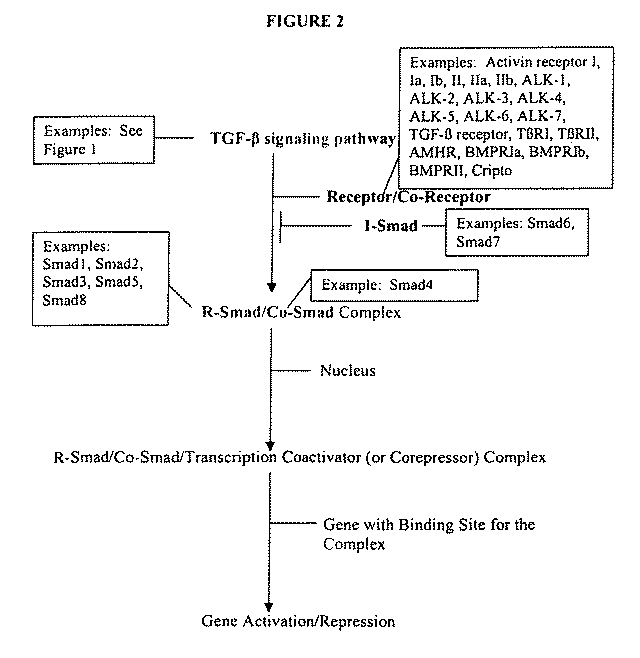Dopaminergic neurons differentiated from embryonic cells for treating neurodegenerative diseases
a technology of dopaminergic neurons and embryonic cells, applied in the direction of genetic material ingredients, peptides, immunoglobulins, etc., can solve the problems of heavy dependence on unstable and problematic sources of fetal tissue in the processing process, and achieve the effect of reducing or eliminating the symptoms of neurodegenerative diseases
- Summary
- Abstract
- Description
- Claims
- Application Information
AI Technical Summary
Benefits of technology
Problems solved by technology
Method used
Image
Examples
example 1
In Vitro Differentiation Neuronal Differentiation of Smad4− / − and Cripto− / − Embryonic Stem Cells
[0101]Smad4 and Cripto are key TGF-β signaling pathway components that control multiple aspects of embryogenesis, including mesodermal and epidermal cell development. Both Smad4− / − and Cripto− / − mice die prior to embryonic day 7.5 with severe developmental defects in gastrulation and axial organization, respectively.
[0102]ES Cell Culture and In Vitro Differentiation.
[0103]Wild type (WT) E14K and Smad4− / − (C8-13A1) ES cells were kindly provided by Drs. C. Sirard and Tak W. Mak, University of Toronto, Toronto, Canada). Wild type TC 1 and the Cripto− / − (clones CHG51 and CHG79) were kindly provided by Dr. M. M. Shen, UMDNJ-Robert Wood Johnson Medical School, New Jersey, USA. The ES cells were propagated and in vitro differentiated as described previously (Lee et al. Nat. Biotechnol. 18: 675-679, 2000; Chung et al. Eur. J. Neurosci. 16: 1829-1838, 2002).
[0104]Immunocytochemistry
[0105]Cells wer...
example 2
Transplantation of Cultured Smad4− / − and Cripto− / − Embryonic Stem Cells into the Mammalian Brain
[0122]Preparation of ES Cells for Transplantation
[0123]ES cells were cultured for four days in the absence of LIF on 100 mm Fisher brand bacteriological grade petri dishes to form embryoid bodies (EB). EBs were then transferred to 15 ml sterile culture tubes, spun at 1000 rpm for 5 min, and rinsed once in Ca2+ and Mg2+-free Dulbecco's Phosphate-Buffered Saline (D-PBS, Gibco / BRL). After rinsing, D-PBS was removed and 1.5 ml of trypsin solution was added. The cells were incubated for 5 minutes at 37° C. and triturated with fire polished Pasteur pipettes with decreasing aperture size to fully dissociate the cells. Finally, ES cells were spun at 1000 for 5 min and the trypsin solution replaced with 200 μl culture media. The viability and concentration of the ES cells was determined using a hemocytometer after staining with acridine orange and ethidium bromide.
[0124]Transplantation of Cultured...
PUM
| Property | Measurement | Unit |
|---|---|---|
| anatomical structures | aaaaa | aaaaa |
| nucleic acid | aaaaa | aaaaa |
| length | aaaaa | aaaaa |
Abstract
Description
Claims
Application Information
 Login to View More
Login to View More - R&D
- Intellectual Property
- Life Sciences
- Materials
- Tech Scout
- Unparalleled Data Quality
- Higher Quality Content
- 60% Fewer Hallucinations
Browse by: Latest US Patents, China's latest patents, Technical Efficacy Thesaurus, Application Domain, Technology Topic, Popular Technical Reports.
© 2025 PatSnap. All rights reserved.Legal|Privacy policy|Modern Slavery Act Transparency Statement|Sitemap|About US| Contact US: help@patsnap.com



